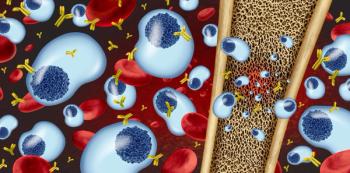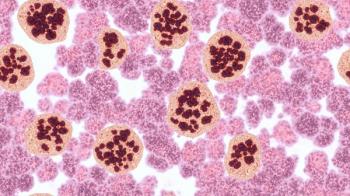Introduction
The design of a pharmaceutical dosage form is a key factor in product success. Beyond the physicochemical and pharmacologic properties of the active drug, pharmaceutical products must be designed to meet the needs of physicians, support personnel, patients, and others involved in product use.
Each dosage form has unique design requirements, and medication safety must be central to these considerations. A product with issues such as look-alike/sound-alike (LASA) names, complicated calculations, difficult dilutions, or indistinct packaging—even if otherwise effective—cannot be considered acceptable.1
Because the final design of a commercial product typically remains unchanged throughout its commercial life, any potential safety issues must be managed every time the product is used. This applies equally to 503A and 503B compounded preparations.2 Products with safety problems risk patient harm, company embarrassment, regulatory consequences, and costly redesign efforts. Designing products correctly from the start is always less expensive and safer. Those involved in dosage form design must take responsibility for ensuring the product can be used safely: who will use it, how it will be used, and what might go wrong.
This article focuses on the quality attributes of an epinephrine topical solution product, indicated for nasal congestion, hemostasis, epistaxis, and dental, mucosal, and sinus procedures. It may also be compounded with local anesthetics such as lidocaine-epinephrine-tetracaine (LET) solution.
Epinephrine Nasal Solution Product Alert
The selected dosage form was recently highlighted in regulatory communication addressing similar epinephrine products.4 In December 2024, the FDA warned health care professionals not to use commercially available epinephrine nasal solution products manufactured by BPI Labs and Endo USA due to confusion with epinephrine injection products.5 Endo USA subsequently recalled its nasal solution product.6
In March 2025, BPI Labs received a warning letter from the FDA citing unapproved new drug and misbranding violations, and the BPI response has not been posted as of this writing.7 The FDA has received product complaints about this product, including 1 case of a person being injected with nasal solution. A recent YouTube video also reported confusion between epinephrine nasal solution and neffy® epinephrine nasal spray, while other companies continue to market similar products.8-10
The FDA’s concern centers on packaging similarities between nasal solutions and injection products. Both use nearly identical vials, contained-closure systems, and secondary packaging, making medication errors far more likely (Figure 1).7
USP Ratio-Strength Labeling
USP labeling policy changes for single-entity epinephrine products are also relevant.11 In 2016, the notation switched from ratio-strength to metric (mg/mL). Epinephrine 1:1000 injection became 1 mg/mL; epinephrine 1:10,000 injection became 0.1 mg/mL. This eliminated confusing calculations and dilutions. However, when epinephrine is combined with other ingredients, such as anesthetics, ratio-strength notation remains in use (Figure 2). Topical epinephrine at low concentrations (eg, 1:200,000 to 1:1,000,000) may still be ordered using ratio-strength notation.
Formulation and Compounding Process
Medication safety begins with a thorough understanding of the drug’s physicochemical properties. The dosage form must remain stable for its entire life cycle, and concentrations must support safety and efficacy.
Epinephrine Drug Substance
Epinephrine products may use epinephrine base, racemic epinephrine (DL-epinephrine), or epinephrine salts such as hydrochloride, bitartrate, or borate. When salts are used, manufacturers must calculate the correct amount using molarity.12 The nasal solution’s drug content is inconsistent with calculations for other epinephrine products.13
Stability
Package inserts provide limited stability data, although other resources are available.14 Epinephrine degrades in alkaline pH, light, or air exposure and may discolor as it oxidizes. Some bulk producers have issued recalls due to discoloration, and several patents address stability concerns.15,16 Current nasal solutions are sterile until opened, but injecting a nonsterile solution can have serious consequences.17 Comprehensive stability information should be included in package inserts, especially for compounding purposes.
Solution Concentration
Epinephrine concentrations vary widely by clinical use. Systemic doses use higher concentrations, whereas typical doses are much lower.18 Some topical products provide dilution instructions rather than ready-to-use concentrations, requiring multiple calculations and dilutions—both safety hazards. Proposed solutions include standardizing the topical concentration at 1:200,000, eliminating unnecessary calculations, and improving safety.19,20-24
Primary Package
The product's primary package comprises the container and container-closure system that directly contacts the formulation. A dosage form providing the desired drug concentration as a ready-to-use solution administered without subsequent calculations or dilutions is obviously desirable for medication safety.
Container
Epinephrine nasal solution is currently supplied in vials containing up to 30 mL. Different container sizes for a topical product related to clinical use would further distinguish topical product appearances from injection products. Larger volumes (60 mL) could be supplied in glass containers for larger volume applications. A 1:200,000 solution could be supplied in a unit dose container (2-4 mL) for dropwise dosing; glass vials and blow-fill-seal containers are applicable. These packages would be distinctly different from epinephrine injection dosage forms. Amber containers could be used to prevent light exposure; however, solution discoloration would not be observable in amber containers.
Closure
The container-closure system in current nasal solution products utilizes a septum and overseal or ferrule that is typical for sterile products and implies sterile product use. Changing the topical product container-closure to a screw cap and supplying dropper or spray attachments would satisfy product use objectives and imply topical use; human factor testing would be part of package design, and all closure changes would require stability studies with substantial time/cost. Training, counseling, or video tutorials are recommended to demonstrate proper use of a new container-closure system.
Labeling
The product label, package insert, and secondary packaging are the primary sources of information regarding medication safety; labeling deficiencies and omissions may contribute to medication errors.
Drug Name
Epinephrine is also known as adrenaline. Although epinephrine is the official USP drug name and is more commonly used in North America, adrenaline is preferred in the United Kingdom and European Union.25 “Adrenalin” has been trademarked in the US as a proprietary name for generic epinephrine. Tall-man lettering should be used on all epinephrine labeling. Acknowledging adrenaline in labeling would eliminate the EPHEDrine-vs-ePHEDrine LASA problems. Redundant labeling of drug names (epinephrine and adrenaline) should be implemented to facilitate change transitions and preemptively minimize medication errors.
Metric Nomenclature (mcg/mL)
When USP adopted metric labeling for single-entity epinephrine products in 2016, it did not change potency notation for diluted solutions as primary or secondary ingredients (eg, anesthetics with epinephrine). If diluted epinephrine solutions become available, metric labeling (mcg/mL) could be utilized to eliminate ratio-strength notation (eg, epinephrine 1:200,000 labeled as 5 mcg/mL). Metric 5 mcg/mL is preferable to 0.005 mg/mL to avoid errors with zeros and commas. Redundant labeling of dosage strength (mcg/mL and ratio strength) could also be implemented to facilitate change transitions and preemptively minimize medication errors.
Auxiliary Information
Ancillary, advisory, or cautionary information relevant to medication safety should be included in the label's primary display panel and in secondary packaging. Auxiliary instructions such as "topical use only," "not for injection," "not sterile," and "not for ophthalmic use" would further distinguish topical products from injection products. Vial neck collars, shrink films, and other added labels would also help improve product recognition and reduce mistakes. Furthermore, a patient package insert should be developed for this product to provide detailed dosage information and information regarding possible problems.26 Model patient package inserts are available from the Institute of Safe Medication Practice. Pharmacist counseling of patients should also emphasize potential problems and incorrect use. Corporate trade dress label and box design must not detract from individual product identity. Figure 4 is a revised label demonstrating the proposals outlined above.
Package Appearance
The secondary packaging (box) must be consistent with primary package labeling and must be distinguishable from other products. Figure 1 demonstrates indistinguishable BPI secondary packaging between epinephrine nasal solution and epinephrine injection. Changes listed above (eg, container volumes, solution dosage strength, label auxiliary information) will distinguish topical vs. injection products. BPI has revised its product packaging using color to aid in product differentiation (Figure 5).
Conclusion
Acknowledgements
Discussions with Richard Poska, RPh, Managing Director, Flexo CMC Consulting, Nokomis, FL, and Gary L. Drahos, DDS, MJ, RPh, are greatly appreciated.
Photography by Aaliyah Odotola, student at the University of Illinois Retzky College of Pharmacy, Chicago, IL, is greatly appreciated.
Key attributes of a pharmaceutical dosage form begin with the properties of the active ingredient. A dosage form must contain an efficacious drug substance. Assuming an active drug substance able to be formulated into a stable dosage form, the dosage form quality attributes must be thoughtfully designed to facilitate product use. Three general categories of design considerations must be evaluated: formulation/compounding process, primary packaging, and labeling (ie, label, package insert, and secondary box).
The Table summarizes proposed medication safety issues identified for an epinephrine topical solution product. Proposed changes would distinguish the epinephrine topical product from an epinephrine injection product, which was the initial problem identified by the FDA for this dosage form, as well as incorporate additional features that anticipate and prevent future medication errors. Product design attributes developed by the pharma industry are critical in the medication safety of pharmaceutical products used throughout the product lifecycle. Pharma industry design personnel must feel responsible for the safe use of their dosage forms and consciously design their products with medication safety in mind.
About the Authors
Paul L. Pluta, RPh, PhD, is a pharmaceutical scientist with pharmaceutical industry, academic teaching, journal editorship, community pharmacy, and hospital pharmacy experience.
Alan M. Mancini, RPh, is a pharmaceutical scientist with pharmaceutical industry, academic teaching, community pharmacy, and hospital pharmacy experience.
Jeremy M. Ebersole, MS, is a biological science instructor at Blackhawk Technical College in Janesville, Wyoming.
Nishant B. Thakar, RPh, PharmD, is an associate professor of clinical sciences at Roosevelt University College of Science, Health, and Pharmacy in Schaumburg, Illinois.
Varanya Chaiyaperm, RPh, PharmD, is a clinical assistant professor at the University of Illinois Retzky College of Pharmacy in Chicago.
REFERENCES
FDA guidance needed to assure safe labeling practices by 503A and 503B compounders. ISMP Medication Safety Alert! 2018;23(6). Accessed September 4, 2025. https://www.ismp.org/sites/default/files/attachments/2018-03/20180322_0.pdf
!!Topical Epinephrine vs Neffy Stitch!!. @Your.Fav.Pharmacist. May 25, 2025. Accessed September 4, 2025. https://www.youtube.com/shorts/pVxZcknjHC0
Adrenalin Topical Solution [prescribing information]. ERFA; January 10, 2001. Accessed September 4, 2025. https://pdf.hres.ca/dpd_pm/00064089.PDF
Womack JP. Epistaxis: outpatient management. Am Fam Physician. 2018;98(4):240-245.
Häfner HM, Röcken M, Breuninger H. Epinephrine-supplemented local anesthetics for ear and nose surgery: clinical use without complications in more than 10,000 surgical procedures. J Dtsch Dermatol Ges. 2005;3(3):195-199. doi:10.1111/j.1610-0378.2005.04758.x
Wu Y, Zeng Y, Bao X, Xiong H, Fan X, Shen B. Application of tranexamic acid and diluted epinephrine in primary total hip arthroplasty. Blood Coagul Fibrinolysis. 2018;29(5):451-457. doi:10.1097/MBC.000000000000743
Davis B. What dose of epinephrine contained in local anesthesia can be safely administered to a patient with underlying cardiac disease during a dental procedure? J Can Dent Assoc. 2010;76:a36.
Hassanpour SE, Zirakzadeh H, Aghajani Y. The effect of subcutaneous epinephrine dosage on blood loss in surgical incisions. World J Plast Surg. 2020;9(3):309-312. doi:10.29252/wjps.9.3.309
Aronson JK. “Where name and image meet”—the argument for “adrenaline.” BMJ. 2000;320(7233):506-509. doi:10.1136/bmj.320.7233.506





















































































































































































































